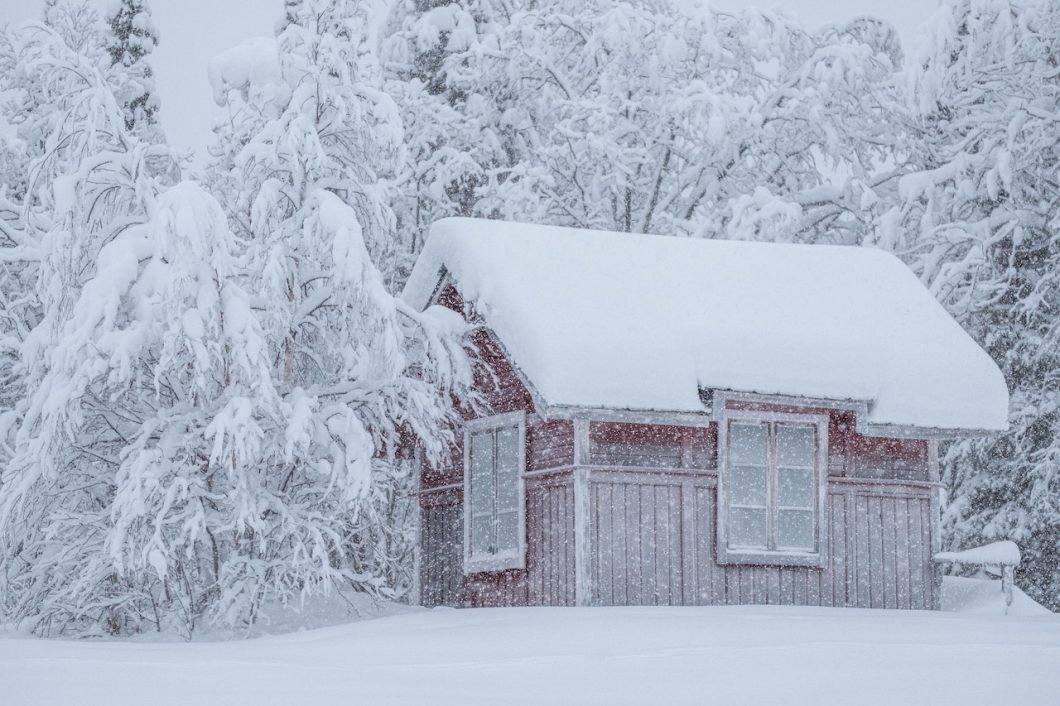There are many perks to living in a tiny house, from the lower mortgage cost to the unique lifestyle, but when winter hits, proper preparation is key.
You’ll need to ensure that your house is maintained and set up so that it will stay in one piece and keep you and your family safe.
Plus, you may need to store away some of your summer items, including your car. In this guide, we’ll show you how to do all of that and more.
You’ll Want To Keep The Heat Inside
You could experience mild to bitterly cold winter months depending on where you live. In any case, it’s essential to properly heat your home without wasting energy in the process.
There are several ways to make your home energy secure, including sealing your windows and around your doors. If your windows are older, then much of your heat and energy can leak out.
That means you’ll have to run the heat for longer to get warm and likely have a higher utility bill. Before winter comes around, make it a point to have your home inspected so a contractor can seal any weak points.
It’s easy to forget that wasted energy can also seep through your roof. If the roof is poorly insulated or your tiny house is close to 15 years old, have an expert inspect it and ensure it’s in good condition. In addition to saving energy, a more robust roof will also be able to hold the weight of snow.
While it’s essential to keep your home sealed during the winter, it’s also vital to keep the house well-ventilated so you can remove the moisture in indoor air. If you don’t ventilate, the damp air could turn moldy and impact your health.
To ventilate your tiny house, open the windows a bit for a short while to vent the condensation. Many experts also recommend an RV ceiling-mounted air conditioner for tiny homes because it’s just the right size and won’t produce excess moisture.
If all else fails, turn on a dehumidifier.
Protecting Your House And Pipes
In addition to the projects necessary to keep your home safe, you’ll also want to make some considerations to protect your house from the winter elements.
For instance, if you have wood siding on the exterior of your home, it could rot over time, especially if you get a lot of snow and rain. As such, if you spot rot, you’ll want to repair it as soon as possible.
You also want to fill gaps so you don’t let out energy or let in the elements, especially if you have fiber cement siding. For that material, you can use caulk to patch any vulnerabilities.
A concern for all homes during cold weather is the plumbing and the potential for frozen pipes, so be sure to take the proper precautions.
If the water freezes, it can expand and break your pipes, leading to a leak or flooding. You can try various tactics to protect your pipes during winter, including buying heat tape that you’d wrap around the pipes to keep them from getting too cold.
If you live in a frigid climate, it’s wise to take an extra step and insulate the pipes. Call out an expert if you need help.
Before winter hits, it’s vital that you look at your water heater situation. Many tiny houses have an outdoor water heater.
If your utility area is not insulated, the water heater could freeze. If you plan to stay in your tiny house during winter, ask the builder or contractor if a water heater can be installed indoors so it’s safe year-round.
Storage Can Be A Factor
If you’re like many tiny homeowners and keep lawn furniture and other knick knacks out on the lawn for summertime leisure, now’s the time to move or store that stuff.
Wicker furniture can absorb moisture and crack and iron and steel furniture can rust. Store those items in a trailer or rent a storage unit if possible.
You’ll need to get a little more creative for smaller items you want to store at home. One idea is to hide your items by investing in an ottoman or table that lifts for storage, and you can also use it as regular furniture.
Another idea is to find taller shelving units to store items higher off the ground instead of taking up floor space. Finally, use door hangers for shoe storage and winter jackets.
A final consideration is what to do with a car that doesn’t do well in snow and is just taking up space. Before you drive it to the storage unit, you need to ensure that you’re smart about car winter storage.
Start by washing the car to eliminate salt and debris that can corrode the vehicle over time. Also, complete some maintenance, like checking the fluids and filters so the car stays in good shape.
Then, inflate the tires to prevent damage so they’re ready to go when you return to take your ride out of storage.
It may seem like there’s a lot to do to prepare your tiny house for winter, but these steps will ensure your home’s security and your family’s health.
If you plan to buy a house to live in during winter, ask for these upgrades upfront, and you’ll be good for years to come.
Image Source: Unsplash
